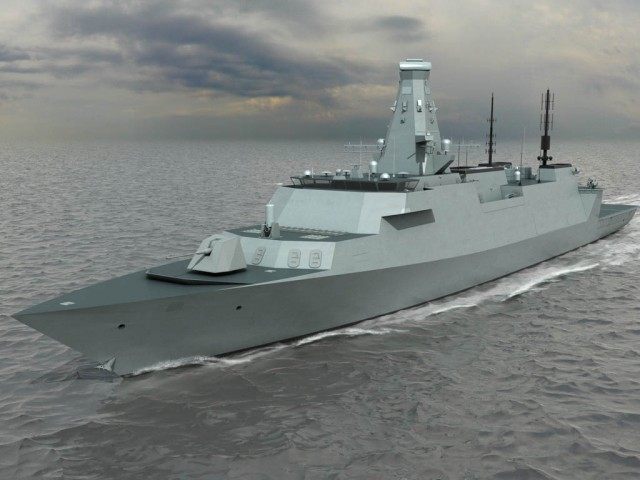Australian Prime Minister Tony Abbott’s conservative government has called time on indigenous plans to build a new frigate fleet, opening the field to a number of potential foreign designs.
The previous preferred option to build up Australia’s anti-submarine warfare (ASW) capability – now absolutely crucial as submarine proliferation becomes a key security issue in the Pacific Ocean – was the conversion of an unused destroyer hull into a frigate, reports the Australian Financial Review.
The programme was scrapped after the government realised a destroyer hull retrofitted with submarine hunting equipment would nevertheless make a poor submarine hunter, as the hulls are much noisier in the water – making them more easily detected and targeted by enemy submarines.
While a number of nations including France, Germany and possibly even Turkey are expected to bid for the $20 billion contract to build Australia’s new frigates, a favourite to take the order is Britain’s BAE systems with the type 26 frigate. Although the first customer and commissioner of the craft will be Britain’s Royal Navy, the ship has been designed for – and long pitched to – ally navies like the Royal Canadian Navy, Royal Australian Navy and Royal New Zealand Navy.
All four navies are looking to replace their present frigate fleets at roughly the same time in the early to mid 2020s, and if Australia follows Britain it is likely the others will too.
Collaborating on such a project has a number of advantages for the nations involved. Although they are being designed in Britain, the export orders can also be built in Australian shipyards, as was the case with the BAE fitted-out Canberra class landing helicopter dock, which suits the Australian doctrine of developing the indigenous defence industry. Further export orders – two ships for New Zealand, for instance – could also be completed in Australian yards.
Anti-submarine warfare was briefly out of fashion in defence circles after the end of the Cold War, as planners assumed the death of the Soviet Union meant an end to the submarine threat. The Asia-Pacific region is now a major growth area for the submarine industry as all major players scramble to develop and buy the most sophisticated and quietest submarines possible. Australia, Bangladesh, China, India, Indonesia, Japan, Malaysia, Myanmar, Pakistan, the Philippines, Singapore, South Korea, Taiwan, Thailand and Vietnam are all developing, or planning to buy, new submarines in what is presently the world’s largest arms race.
With such a struggle to build under-way and a potential tinderbox of bitter tensions as exists between China, Japan, and Taiwan over disputed islands, exclusive economic zones and seaways, ASW becomes a crucial defence asset to any nation in the neighbourhood seeking to defend their own assets. Britain has long enjoyed a reputation of building the best ASW and mine-hunting ships in the world, and the type 26 as a modular design could offer the flexible mission loads Australia needs.
Despite that, the defence industry is cramped and competition is fierce. With Australia presently close to deciding on a supplier for its own submarine fleet, the colossal global firms capable of building the machines are doing anything they can to get the contract.
Until just a few days ago the favourite to win what is among the largest defence contracts in the world, Japanese Kawasaki Heavy Industries has reacted to a potential better bid by Germany’s ThyssenKrupp for the $50 billion deal by inviting British submarine builders BAE and Babcock systems to join them in a consortium, reports ChannelNewsAsia today. Both companies are already well established in Australia and have a good working relationship with the Royal Australian Navy – a factor that could be enough to sway the decision in their favour.
Follow Oliver Lane on Twitter: Follow @Oliver_Lane or e-mail to: olane@breitbart.com

COMMENTS
Please let us know if you're having issues with commenting.